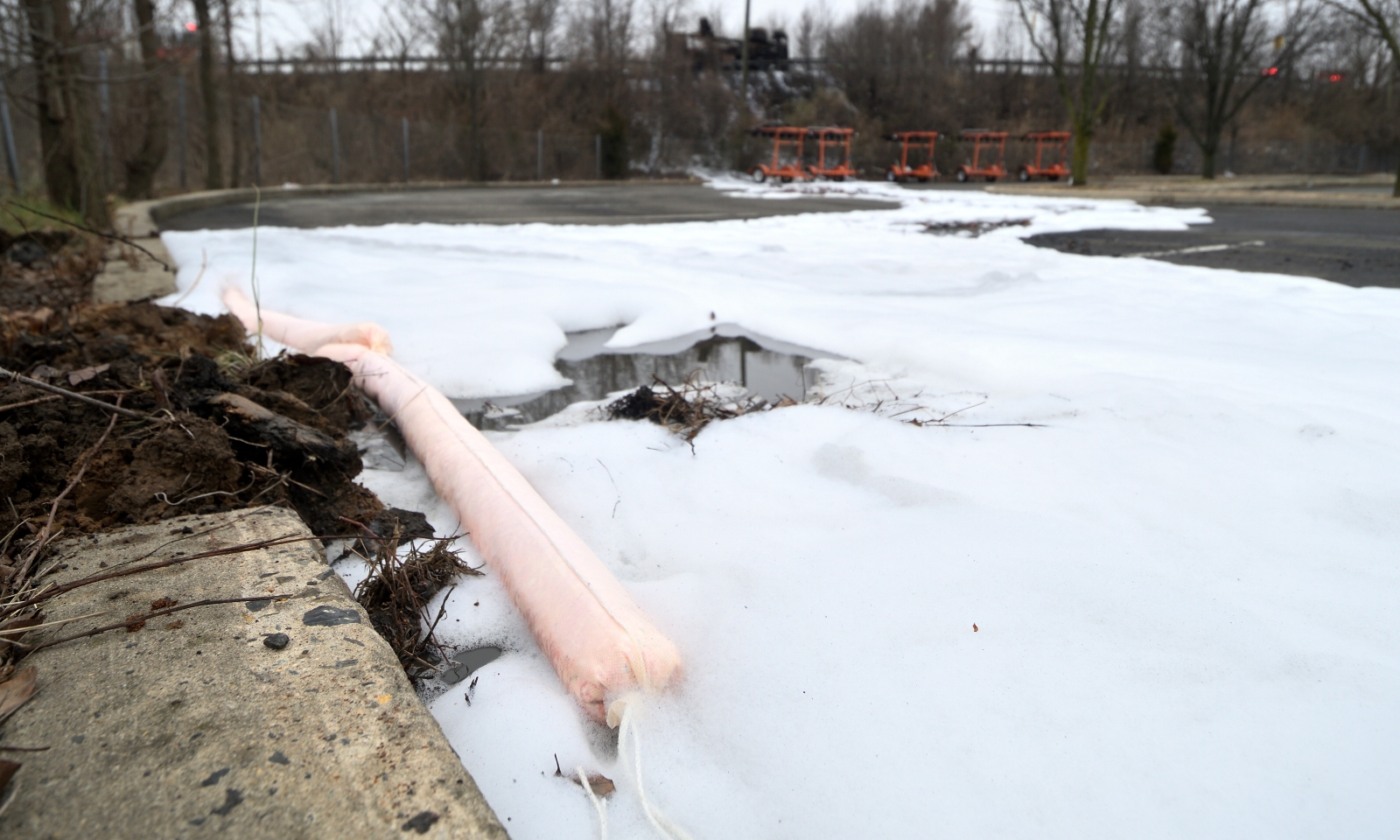
The United States government has said it is immune from 27 lawsuits filed by local and state governments, businesses and property owners over the military’s role in polluting the country with deadly PFAS, also known as “forever chemicals.” The lawsuits are a small fraction of the thousands of cases brought by plaintiffs across the country against a slew of entities that manufactured, sold and used a product called aqueous film-forming foam, or AFFF — an ultra-effective fire suppressant that leaked into drinking water supplies and soil across the U.S. over the course of decades.
The Department of Justice asked a US District Judge in South Carolina to dismiss the lawsuits last month, arguing that the government cannot be held liable for PFAS contamination. Lawyers for the plaintiffs called the move “misleading” and said dismissing the lawsuits would expand an ongoing environmental catastrophe the Pentagon helped create.
Per- and polyfluoroalkyl substances, commonly known by the acronym PFAS (pronounced PEA’ phase), was invented by the chemical giant DuPont in the 1940s. DuPont trademarked the chemical as “Teflon,” which many Americans have come to know and love for its use in nonstick cookware in the latter half of the 20th century. 3M, another industry behemoth, quickly overtook DuPont as the world’s largest producer of PFAS, which was also used in makeup, food packaging, clothing and many industrial applications such as plastics, lubricants and coolants.
Unfortunately, PFAS cause a host of health problems. PFAS has been linked to testicular, kidney and thyroid cancer; cardiovascular disease; and immune deficiencies.
The Department of Defense became involved in PFAS development in the 1960s. In response to a number of deadly infernos on military ship decks, the Navy’s research arm, the Naval Research Laboratory, collaborated with 3M on a new type of firefighting foam that can extinguish high-temperature fires. The active ingredient in the foam was “fluorinated surfactant”, otherwise known as perfluorooctane sulfonic acid or PFOS – one of thousands of chemicals under the PFAS umbrella. Internal studies and memos show this 3M became aware that its PFAS products could be harmful to animal subjects not long after the foam was patented.
Started in the 1970s, every Navy ship—and soon, almost every U.S. military base, civilian airport, local fire training facility, and firefighting station—had AFFF on site in the event of a fire and to use for training. Year after year, the scum at these sites was dumped into the sea and onto bare land, where it contaminated the earth and migrated into nearby waterways. The chemicals, which do not break down naturally in the environment, are still there today. According to the non-profit Environmental Working Group there is 710 military sites with known or suspected PFAS contamination across the country, including Guam, Puerto Rico and the US Virgin Islands.

Bastiaan Bibs / NurPhoto
The Department of Defense, or DOD, is under increasing pressure from states and Congress to clear these contaminated sites. But it was slow to do soor even to admit that PFAS, which was found in the blood of thousands of military service members, pose a threat to human health. Instead, the DOD, which is required by Congress to phase out AFFF in some of its systemsdoubling on the chemical’s usefulness as recently as 2023. “Losing access to PFAS due to overly broad regulations or severe market contractions would have a major impact on national security and DOD’s ability to fulfill its mission,” defense officials said written in a report congress last year.
Meantime, people living near military bases — and members of the military – got sick. The lawsuits filed in U.S. District Court in South Carolina, filed by farmers and several states, seek to make the government pay for the water and property pollution the DOD allegedly caused.
Even if these lawsuits are allowed to proceed, experts told Grist they are unlikely to be successful. That’s because they rely on the 1946 Federal Tort Claims Act, a law that allows individuals to sue the federal government for wrongful acts committed by people working on behalf of the US if the government has violated specific, mandatory policies.
But the Federal Tort Claims Act has loopholes. One of these loopholes, called the “discretionary function” exemption, states that federal personnel who use their own personal judgment to make decisions should not be held liable for harm caused. The US government argues that members of the military used their discretion when they began requiring the use of AFFF and that no “mandatory or specific” restrictions on the foam were violated. “For decades, military policy has encouraged — rather than prohibited — the use of AFFF,” the Justice Department wrote in its motion to dismiss the cases.
“Every decision has some discretion,” said Carl Tobias, a professor at the University of Richmond School of Law, noting that the discretionary function exemption can be applied to virtually any decision made by a federal employee. be taken. “But I don’t think anyone, except maybe the manufacturers of PFAS, had any idea it was that harmful,” he said. 3M and DuPont did not respond to Grist’s requests for comment.

Andy Cross / The Denver Post via Getty Images
In its motion to dismiss, the government made another argument that experts said Grist was likely to succeed. The Pentagon has the authority under the Comprehensive Environmental Response, Compensation and Liability Act of 1980 – better known as the Superfund Act – to cleaning up his own contaminated sites. The Environmental Protection Agency has not yet classified PFAS contamination as “hazardous contamination,” but the DOD says it is already spending billions to investigate and control PFAS at some of its bases. Because the military is voluntarily exercising its cleanup authority under the Superfund Act, its lawyers said in the motion, it should not be held liable for PFAS contamination.
Attorneys for the plaintiffs and the defendants declined requests for comment, citing the ongoing legal proceedings.
The U.S. government is the only defendant involved in the PFAS lawsuits likely to enjoy immunity. Already, 3M, DuPont and other chemical companies, faced with the threat of high-profile trials, have chosen to pay out historic, multi-billion-dollar settlements to water suppliers who claimed that the companies knowingly contaminated public drinking water supplies with perpetual chemicals. And the judge presiding over the enormous batch of AFFF lawsuits has hundreds of other cases to get through that weren’t brought by water suppliers. These include personal injury and property damage cases, as well as those seeking to make PFAS manufacturers pay for medical monitoring for exposed populations.
The scale of the litigation is a clear indication that communities across the US are desperate to find the money to pay for PFAS cleanup – the full cost of which is not yet clear, but can as much as $400 billion. “We can’t even imagine what it would cost,” Tobias said.






